#Fabio Cipolla
Explore tagged Tumblr posts
Text
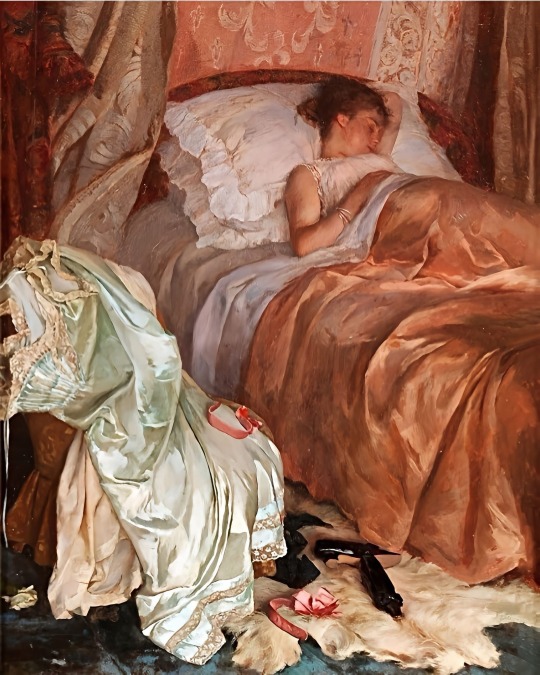
Fabio Cipolla
426 notes
·
View notes
Text
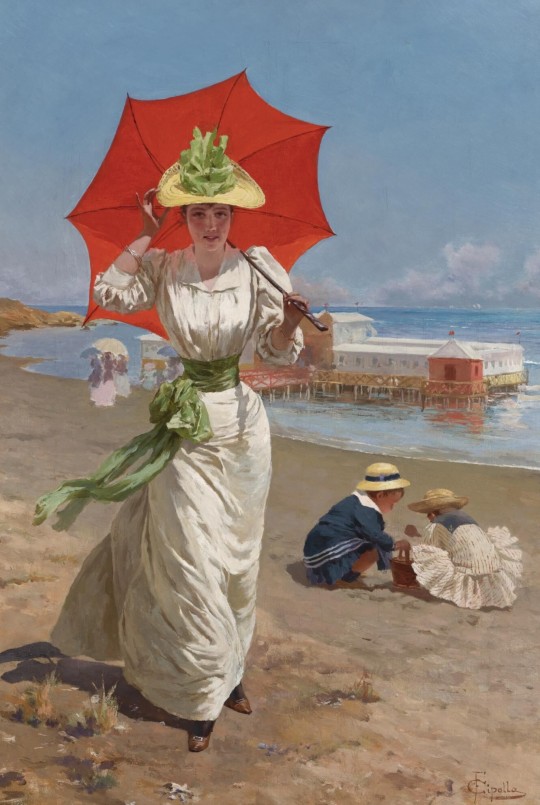
Title: The Red Umbrella Artist: Fabio Cipolla (Italian, 1852-1935) Date: unknown Genre: genre art Medium: oil on canvas Dimensions: 51 cm (20 in) high x 35 cm (13.7 in) wide Location: private collection
#art#art history#Fabio Cipolla#genre painting#genre art#beach scene#Italian art#20th century art#oil on canvas#private collection
380 notes
·
View notes
Text


Anne of the Island by L.M. Montgomery, feat. painting ‘Flower and Feather Caps’ by Fabio Cipolla
191 notes
·
View notes
Text
More Images of Dresses in 1911 -
1911 Princess Marthe Lucile Bibesco by Giovanni Boldini (private collection) 739X1194. From wikiart.org/en/giovanni-boldini/portrait-of-princess-marthe-lucile-bibesco-1911 1502X2406.
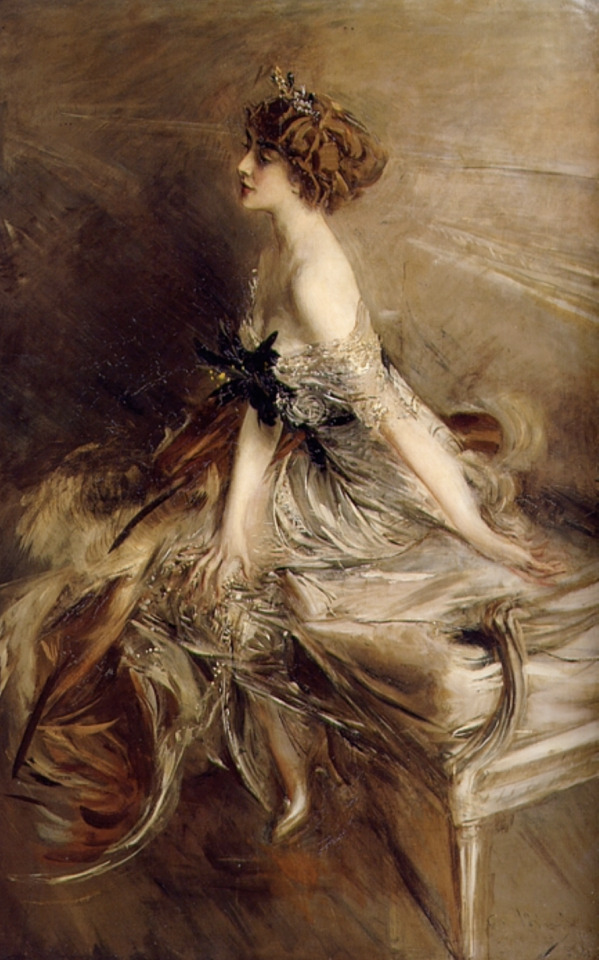
1911 Rachel, Countess Dudley From theesotericcuriosa.blogspot.com/2013_08_14_archive; removed mono-color tint 1164X1600.
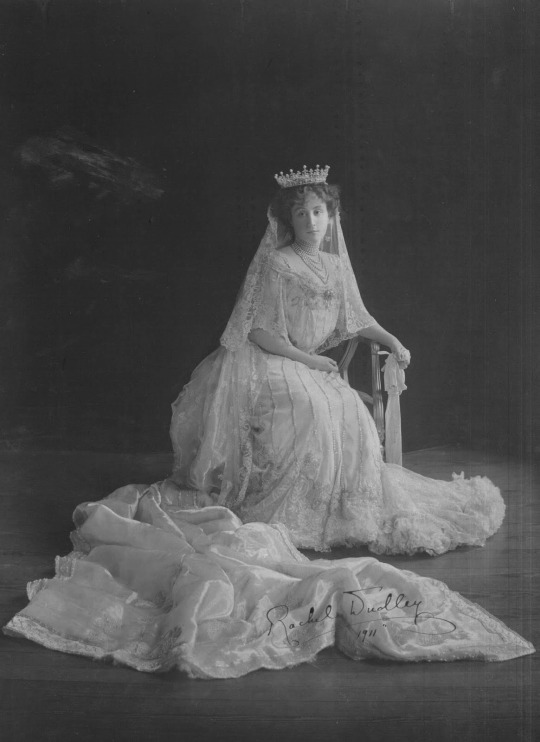
1911 Signora con cagnolino by Fabio Cipolla (auctioned by Farsettiarte). From radikal.ru/fp/63f44c2f57064ef1933392427e54e741 827X1329.
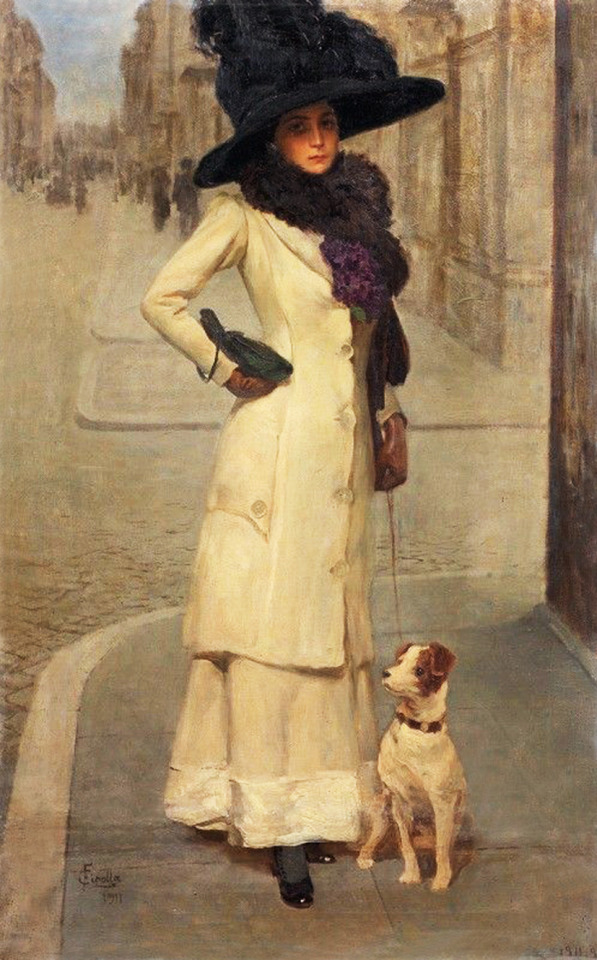
1911 Simplon Pass - The Tease by Sargent (Museum of Fine Arts Boston). From the discontinued Athenaeum site 1123X851.

1911 Woman with Frill by Kees Van Dongen (private collection). From the discontinued Athenaeum Web site 825X1025.

1911 Zofii Brzeskiej by Teodor Axentowicz (Muzeum Narodowe w Warszawie - Warszawa, Poland). From their Web site 1181X1518

ca. 1911 Marquesa del Pazo by ? (Centro de Iniciativas para la Formación Agraria - As Neves, Galicia, Spain). From taboexa.es/2013_01_01_archive.html 955X1461.
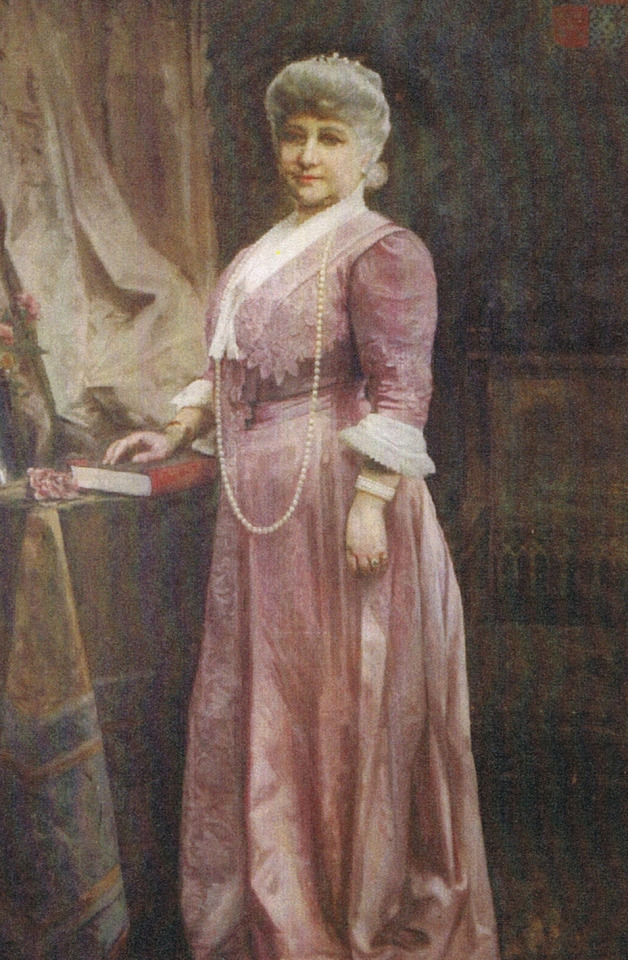
Freiin Olga Charlotte Emma Wilhelmine Grote (1878-1974) by Georg Papperitz (auctioned by Dorotheum). From pinterest.com/dukeofbekasi/royal/ 1080X1384.

Maria Josefa of Austria with Karl. Posted to Foro Dinastias by Katyusha on 25 May 2010.
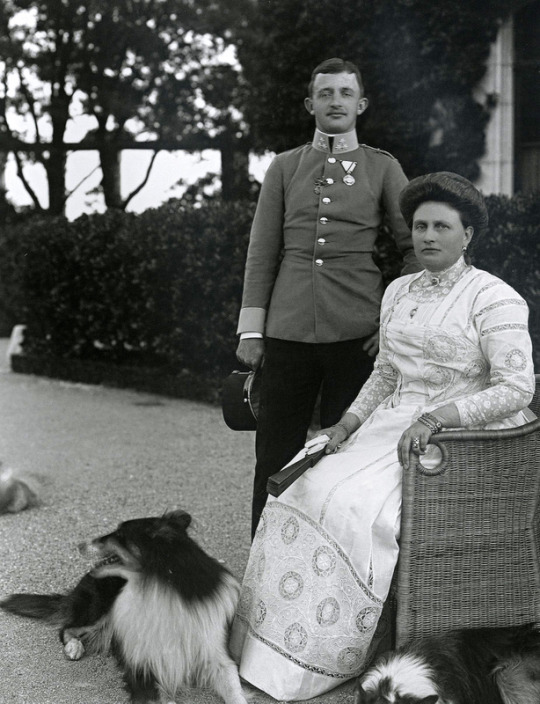
1911 Clarita Seminario, by Raimundo de Madrazo y Garreta (location ?). From godsandfoolishgrandeur.blogspot.com/2021/02/randomly-xx.html via pinterest.com/pin/703406035550728288/; enlarged to fit screen 2090X2862 @144 6.8Mp.png

1911 (June issue) Les Modes cover, Mlle Jane Marnac in evening gown by Baron Christoff von Drecoll. From tumblr.com/mote-historie/731897920694190080/evening-gown-by-drecoll?source=share&; fixed spots & flaws w Pshop 1944X2802
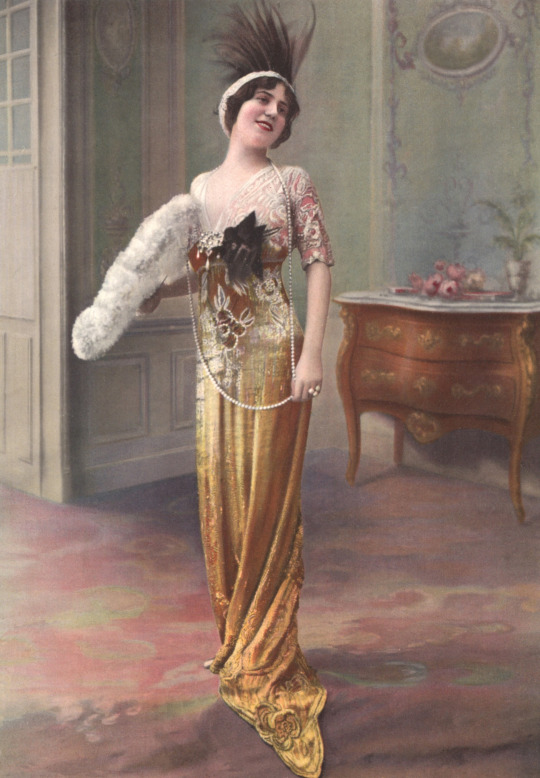
#1911 fashion#1910s fashion#Belle Époque fashion#Edwardian fashion#Marthe Lucile Bibesco#Giovanni Boldini#Rachel - Countess of Dudley#Fabio Cipolla#John Singer Sargent#Kees Van Dongen#Zofii Brzeskiej#Teodor Axentowicz#Marquesa del Pazo#Olga Charlotte Emma Wilhelmine Grote#Georg Papperitz#Maria Josefa of Austria#Clarita Seminario#Raimundo de Madrazo y Garreta#Jane Marnac#Drecoll
17 notes
·
View notes
Text

Today's contributor spotlight goes to Becca, @glitterfang !
She will be recreating A Lover's Token, by Fabio Cipolla 🌟
15 notes
·
View notes
Text
Gatto e Delvino goal, Galli-super e il Toro sbanca Francavilla.
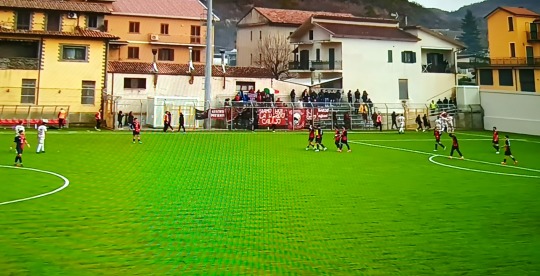
FRANCAVILLA - NARDÒ 1-2
Goal: 38' Gatto, 42' Esposito, 58' Delvino.
FRANCAVILLA: Brezzo; Pellegrini, J. Russo, Visconti, Esposito; Gentile, Gaye, Gargiulo; Musumeci (70' Tedesco), Cipolla, Barone.
Reserve: Iannaccone, Palladino, Macrì, Annan, Coppola, Silvestri, De Marco, Stasi. Coach: Angelo Nole'
NARDÒ: Galli; Delvino, Fornasier, Calderoni; Trinchera, Milli, Davì, Correnti, Lucas (86' Lollo), De Crescenzo; Gatto (90' Piccioni).
Reserve: De Luca, Mossolini, Piazza, Munoz, Mazzotta, Biffero. Coach: Fabio De Sanzo
Arbitro: Alessandro Gervasi di Cosenza.
Collaboratori: Giovanni Di Meglio di Napoli e Michele Criscuolo di Torre Annunziata
Ammoniti: Calderoni, Davì, Milli, Delvino (N) Russo (F)
Il Nardò torna a vincere fuori casa, scava un solco con la zona bassa della classifica e si avvicina alla zona play off. Nonostante la costante emergenza tra squalifiche e infortuni, la compagine neretina è riuscita ad espugnare l'ostico campo di Francavilla in Sinni inguaiando ulteriormente i rossoblu di Mister Nolè.
LA CRONACA:
Partita iniziata sotto la pioggia. Presenti 50 neretini.
Nardò subito pericoloso al 6'. Occasione Nardò. Gatto imbuca per Correnti, diagonale deviato dal portiere in corner.
Risponde il Francavilla all'8' colpo di testa di Gaye, solo in area, palla fuori.
Al 10' inizia il duello tra Milli e il portiere sinnico Brezzo: punizione di Milli, respinge il portiere.
Al 15' esterno sinistro di Gaye, palla al lato di poco. Al 24' sinnici ancora pericolosi. Galli costretto all'uscita sui piedi di Gargiulo.
28' punizione radente di Milli respinta da Brezzo. Ancora Milli al tiro e Brezzo alla respinta su tiro dalla distanza.
Al 35' punizione-cross di Barone deviata da Fornasier in corner. Segue mischia risolta da Galli.
Il Nardò rischia ma trova il goal con un'azione ben orchestrata. Al 38' Correnti ruba palla e innesca Gatto, scatto dell'attaccante, tiro bruciante e goal. Nardò in vantaggio.
Ma il vantaggio regge lo spazio di un battito d'ali. Al 42' pareggio del Francavilla. Corner di Gentile, colpo di testa vincente di Esposito. 1-1.
Al 45' erroraccio di Lucas che perde palla da ultimo uomo. Barone si invola e tira. Grande parata di Galli che salva il Nardò. Si va negli spogliatoi sull'1-1.
Secondo tempo. Nessun cambio.
Riprende il duello personale. Al 52' tiro dalla distanza di Milli respinto in tuffo da Brezzo. Il Nardò gioca con maggiore sicurezza e costruisce alcune palle-goal. Al 58' punizione-cross Calderoni, mischia e palla in corner. Dalla bandierina batte Calderoni, incorna e segna Delvino. 2-1 per il Toro.
Reazione sinnica. Al 62' punizione scodellata in area da Esposito. Galli anticipa tutti. Un minuto dopo, corner di Gentile, Delvino salva sulla linea un tiro di Esposito.
65' corner Gentile, Galli respinge coi pugni, Gaye tira e manda in casa dei tifosi affacciati. Il Francavilla attacca con continuità. Al 67' Gentile entra in area ma pecca d'altruismo e non tira. Occasione sinnica sfumata.
L'ultimo quarto d'ora vede un Francavilla spingersi in attacco disordinatamente. Il Nardò prova a colpire di rimessa. Al 78' Gaye di testa manda alto un traversone di Gentile.
Nel forcing finale sinnico emerge la statura del portiere granata che sistematicamente disinnesca tutte le mischie che si accendono. Dopo un calcio di punizione sparacchiato fuori da Esposito e 7' di recupero, arriva il fischio finale che sancisce una vittoria meritata del Toro e un'ulteriore complicazione nella corsa salvezza per la squadra lucana.
1 note
·
View note
Text

Fabio Cipolla, Italiano (1854 - 1935) O Guarda-chuva Vermelho.
0 notes
Text
Fabio Cipolla (1852 - 1935)
Fabio Cipolla è stato un pittore di qualità, apprezzato per l’abilità nel disegno e per la capacità di trasmettere emozioni, benché oggi non sia tra i nomi più noti del suo periodo. Nonostante non sia valorizzato dalla critica contemporanea — a causa della scarsa reperibilità delle sue opere e delle limitate informazioni biografiche — fu un interprete eterogeneo di fine Ottocento, particolarmente attivo nel panorama artistico romano.
0 notes
Text

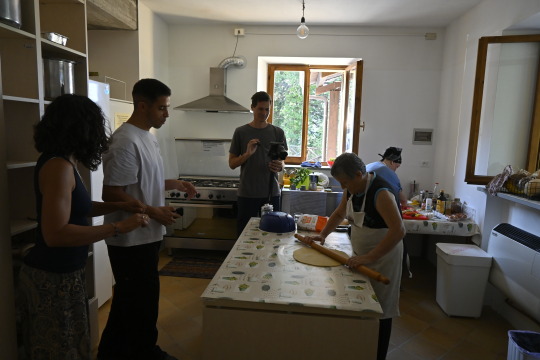


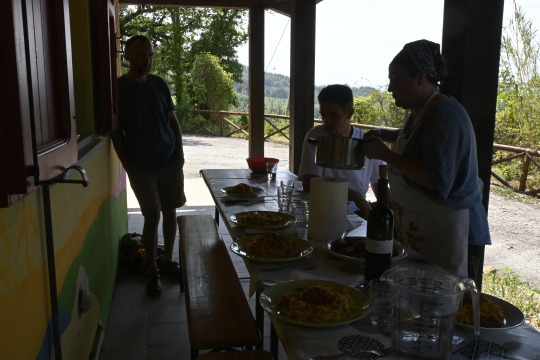

Seconda giornata di incontri con la comunità per Hamdi prima di lavorare in teatro nel weekend con gli abitanti di Mondaino e dintorni che si sono iscritti al workshop.
Nella mattinata di giovedì la nuova cucina della foresteria del teatro si è popolata di odori, racconti e risate. Eravamo in cinque. Mauro alle riprese. Anouk, che ci sta aiutando con le traduzioni, è arrivata portando in dono un mazzo di spezie del suo giardino per insaporire i piatti: salvia e rosmarino, timo e basilico e il loro verde profumato ha colorato tavolo e piatti. Marina, invece, giunta con in spalla il suo matterello personale, si è messa subito all'opera: ha ammonticchiato la farina sul tavolo, rotto 12 uova - queste le dosi da lei consigliate per preparare tagliatelle per tutti - e ha iniziato a impastare aiutata da Hamdi. Poi è arrivata Paola per preparare con noi i il ragù: con lei la sua paranza con disegni romagnoli, la sua taglierina degli anni 40' per fare il trito di carote, sedano, cipolla e spezie e un melone dell'orto in dono.
"Rendere omaggio ai gesti del lavoro e la cucina come atto d'amore": queste le radici dai cui si snoda il progetto di Hamdi come lui stesso racconta mentre lavora osservando attentamente con un occhio i gesti di Marina e con l'altro Paola che sta facendo dondolare ritmicamente sul tagliere il tritaverdura. In un attimo la cucina è invasa dal profumo del soffritto. Intanto, mentre la sfoglia è stesa a riposare prima di essere tagliata, Marina racconta di quando servì un matrimonio con un braccio rotto, o di come le dita delle sue mani siano diverse tra la destra e la sinistra a forza di chiudere tortellini - "che non sono come i cappelletti" ci tiene a precisare. Poi taglia, con un gesto preciso e sicuro, veloce, le tagliatelle e appena finito esclama: "ecco qua, pronte in meno di un'ora: tagliatelle per 14 persone!!!" E noi che siamo in 5 ridiamo, e iniziamo ad invitare altre persone al pranzo: Mirco, che sta montando la sua mostra di fotografie in teatro, e Fabio, compagno di Anouk, che ci raggiunge con la loro piccola Anais.
Siamo a tavola e ricordando il giorno precedente quando Ivan a un certo punto ci dice che le norme sanitarie imposte con l'HACCP hanno definitivamente allontanato i nostri due cervelli depotenziando il secondo, l'intestino, e provocando così un notevole aumento di allergie Fabio ricorda il racconto degli anni Quaranta di Fabio Tombari, scrittore mondainese, che già all'epoca immaginava un futuro di cucine asettiche, super igieniche e di allergie diffuse.
E' Paola poi a raccontare ad Hamdi la storia dell'Arboreto, cosa c'era prima e come è nato il teatro nel bosco: il desiderio di Fabio Biondi di costruire una casa per gli artisti dove potessero lavorare e ricercare lontano dai ritmi produttivi è quello che si è realizzato.
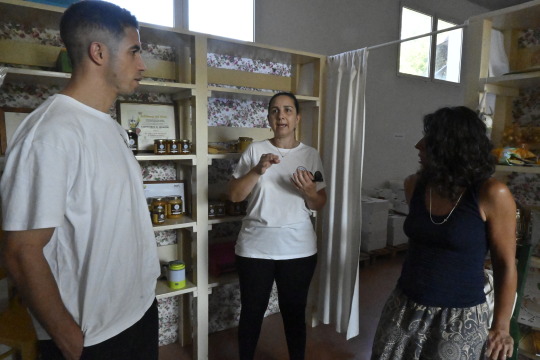

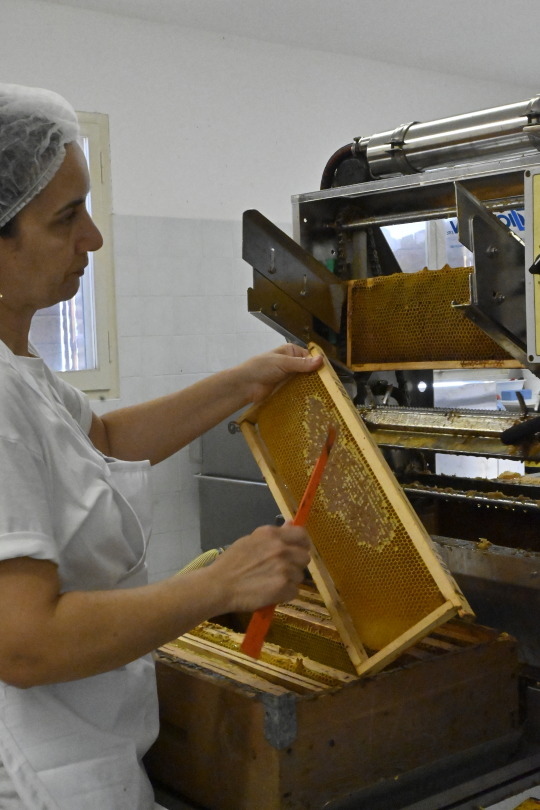
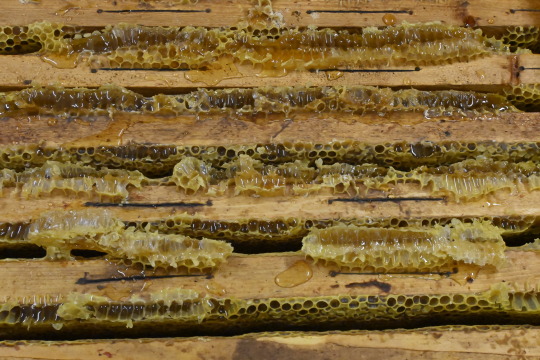


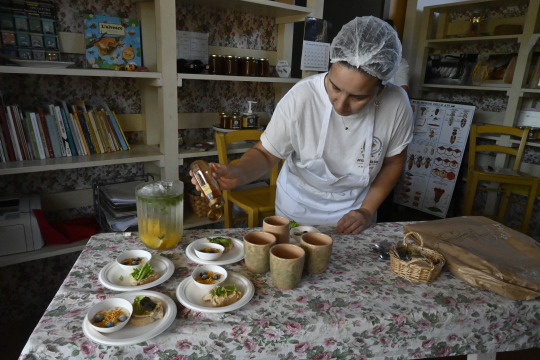
Nel pomeriggio ci accolgono poi Cristina e Mirco de L'oro del Daino nel loro laboratorio di Montespino: sono degli apicoltori di Mondaino che producono miele biologico. Ci mostreranno la smielatura, ci illustra Cristina, cioè il macchinario e il processo che sta dietro alla raccolta del miele. "Un ciclo dura circa una ventina di minuti", ci dice, "spero di non annoiarvi". E invece ci apre le porte a un mondo meraviglioso.
Hamdi intanto le racconta del suo progetto, precisando come in questo momento stia lavorando a coniugare danza cucina e musica ma come la sua ricerca all’origine sia sul mondo del lavoro e sull’azione del lavoratore: il saper fare, il gesto del lavoro, la ripetizione, è ciò che è centrale: "Entrar in un universo è quello che faccio. La danza entra nella qualità del tuo movimento. Il tuo lavoro è l’ispirazione, non è la danza che prende preponderanza sul gesto ma è tutta l’esperienza del nostro incontro che crea la danza".
E mentre apre le cellette esagonali sui telaini del melario primo di inserirlo nella centrifuga, Cristina ci racconta di come il miele si riconosca prima dall'odore e poi dal sapore: il girasole sa di albicocca, il coriandolo è forte... e poi c'è il colore. Poi ci parla di famiglie e di come sia una triste sconfitta quando se ne perde una; ci dice che il pollice è la carta d'identità del miele e di come la propoli racconti la storia di un alveare: "tutto resta, c’è la traccia di tutta la storia di un lavoro".
Poi lo assaggiamo ed è un tripudio di sapori. Nel mentre ci porta nel "bar dei fuchi" Cristina, raccontandoci un simpatico scritto di Susanna Tamaro: "nell'alveare i fuchi stanno lì, come tonti, in aria, non sanno fare niente, non sanno cosa fare come quegli uomini che si aggirano in cucina mentre tu sei super affaccendata, si guardano intono occhi sgranati e chiedono "cosa posso fare?", ecco i fuchi sono proprio così, stanno lì in aria aspettando che passi in volo l'ape regina per il primo e ultimo acme di piacere; non appena infatti si accoppiano precipita nel vuoto e muoiono; e se questo non accade vengono cacciati da quella casa: spermatozoi volanti!" E ridiamo.
Poi prepariamo con lei un piccola merenda di miele e polline e ci salutiamo in attesa di rivederci il 6 settembre per la première del lavoro di Hamdi.
***********************************************
Second day of meetings with the community for Hamdi before working in the theatre over the weekend with the inhabitants of Mondaino and the surrounding area who signed up for the workshop.
On Thursday morning, the new kitchen of the theatre's guesthouse was filled with smells, stories and laughter. There were five of us. Mauro at the shoot. Anouk, who is helping us with the translations, arrived bringing a bouquet of spices from her garden to flavour the dishes: sage and rosemary, thyme and basil, and their fragrant green coloured the table and plates. Marina, on the other hand, arrived with her personal rolling pin on her shoulder, and immediately set to work: she heaped the flour on the table, broke 12 eggs - these are the doses she recommended to prepare tagliatelle for everyone - and began to knead, helped by Hamdi. Then Paola arrived to prepare the ragù with us: with her, her paranza with Romagna designs, her 1940s cutter for chopping carrots, celery, onion and spices, and a melon from the garden as a gift.
"Paying homage to the gestures of work and cooking as an act of love": these are the roots from which Hamdi's project unwinds, as he himself recounts as he works, attentively observing Marina's gestures with one eye and Paola who is rhythmically rocking the vegetable chopper on the chopping board with the other. In an instant the kitchen is invaded by the scent of the soffritto. Meanwhile, as the pastry is laid out to rest before being cut, Marina recounts the time she served a wedding with a broken arm, or how the fingers on her hands are different between the right and the left as she closes tortellini - "which are not like cappelletti", she points out. Then he cuts, with a precise and sure, quick gesture, the tagliatelle, and as soon as he is finished he exclaims: ‘there you go, ready in less than an hour: tagliatelle for 14 people!!!’ And there are five of us laughing, and we start inviting other people to lunch: Mirco, who is mounting his photo exhibition in the theatre, and Fabio, Anouk's partner, who joins us with their little Anais.
We are at the table, and remembering the previous day when Ivan at one point tells us that the health regulations imposed with the HACCP have definitively removed our two brains, depotentiating the second one, the intestine, and thus causing a notable increase in allergies Fabio recalls the story from the 1940s by Fabio Tombari, a writer from Mondain, who at the time was already imagining a future of aseptic, super-hygienic kitchens and widespread allergies.
It is Paola who then tells Hamdi the story of the Arboretum, what was there before, and how the theatre in the forest came into being: Fabio Biondi's desire to build a home for artists where they could work and research away from the rhythms of production is what came true.
In the afternoon, we are welcomed by Cristina and Mirco of L'oro del Daino in their workshop in Montespino: they are beekeepers from Mondaino who produce organic honey. They will show us honey extraction, Cristina illustrates, i.e. the machinery and process behind harvesting the honey. "A cycle lasts about twenty minutes", she tells us, “I hope I don't bore you”. Instead, she opens the door to a wonderful world.
In the meantime, Hamdi tells us about his project, pointing out how he is currently working on combining dance, cuisine and music, but how his research at its origin is on the world of work and the action of the worker: the know-how, the gesture of work, the repetition, is what is central: ‘Entering a universe is what I do. Dance enters into the quality of your movement. Your work is the inspiration, it is not the dance that takes preponderance over the gesture but it is the whole experience of our encounter that creates the dance'.
And as she opens the hexagonal cells on the frames of the honeycomb before inserting it into the centrifuge, Cristina tells us how honey is recognised first by its smell and then by its taste: sunflower tastes like apricots, coriander is strong… and then there is the colour. Then he tells us about families and how it is a sad defeat when one is lost; he tells us that the thumb is the honey's identity card and how propolis tells the story of a beehive: ‘everything remains, there is the trace of the whole story of a job’.
Then we taste it and it is a riot of flavours. In the meantime, Cristina takes us to the ‘drones’ bar', recounting a nice piece of writing by Susanna Tamaro: “in the beehive, the drones stand there, like drones, in the air, they don't know what to do, they don't know what to do like those men who hang around in the kitchen while you are super busy, they look at each other with wide eyes and ask 'what can I do? ', that's exactly what drones are, they stand there in the air waiting for the queen bee to fly past for the first and last acme of pleasure; as soon as they mate they plummet into the void and die; and if that doesn't happen they are kicked out of that house: flying sperm!" And we laugh.
Then we prepare a small snack of honey and pollen with her and say goodbye, looking forward to seeing each other again on 6 September for the premiere of Hamdi's work.
#Tandem 11
#residenza creativa#performing arts#stronger peripheries#progetto europeo#danzacontemporanea#Hamdi Dridi#tandem 11#hosting community
0 notes
Text

Faust and Mephistopheles. Illustration by Fabio Cipolla.
9 notes
·
View notes
Photo
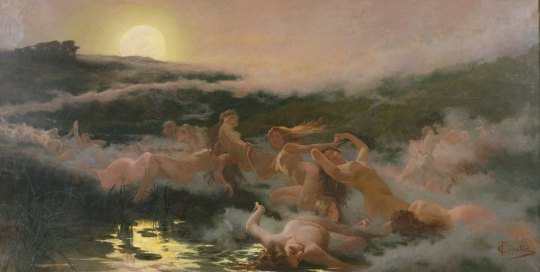
Fabio Cipolla - The Maidens In The Mist
237 notes
·
View notes
Photo

Fabio Cipolla (1852 - 1935) ~ Welcome Interruption~
Oil on canvas
#fabio cipolla#italian art#oil on canvas#artwork#painting#arte#photo of the day#art of the day#trending
26 notes
·
View notes
Photo

Fabio Cipolla Femme au Ara 1876
12 notes
·
View notes
Photo
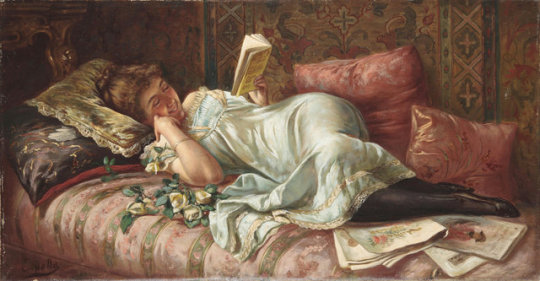
Amusing Reading. Fabio Cipolla (Italian, 1852-1935). Oil on canvas.
The woman has put aside her other reading materials, the newspaper and magazines, to focus on the book bound in yellow, which she is enjoying as the big smile indicates. Such books, bound with yellow boards, were printed at low cost in England and France and often were somewhat racy in content.
273 notes
·
View notes

